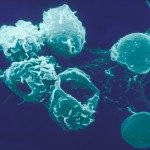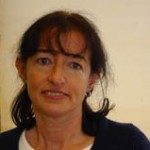Link to Pubmed [PMID] – 10623837
J. Immunol. 2000 Jan;164(2):893-9
Ig H chain (IgH) allelic exclusion remains a puzzling topic. Here, we address the following question: Do phenotypic IgH allelically included cells exist in normal mice and, if so, at what frequency? Sorted cells from heterozygous mice were evaluated for the expression of both IgM allotypes by double intracytoplasmic stainings. Dual expressors were found at a frequency of 1 in 104 splenic B cells. These data were confirmed by direct sequencing of IgH-rearranged alleles obtained after single cell (or clone) PCR on dual expressors. Typically, these cells have one rearranged J558 VH whereas, in the other allele, a D-proximal VH gene is used. Interestingly, dual expressors have rearranged IgH alleles with similar CDR3 lengths. These results show that, in contrast to the kappa L chain and the TCR beta-chain, IgH allelic exclusion is the result of an extremely stringent mechanism. We discuss two non-mutually exclusive scenarios for the origin of IgH dual expressors: 1) IgH allelically included cells arise when the first allele to rearrange productively is unable to form a pre-BCR; dual expressors could be a subset of this population in which, upon conventional L chain rearrangement, both IgH are expressed at the surface; and 2) synchronous rearrangement of the IgH alleles.

